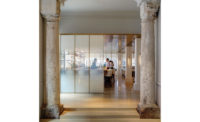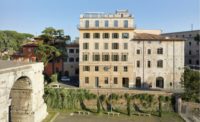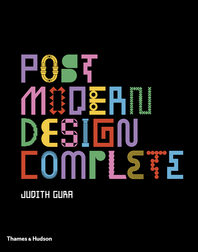Shanghai
Enter Mercato and your first impression is its rawness. The rough concrete, weathered steel, and exposed ductwork might seem out of place in Shanghai, a city where fine-dining interiors tend to be blingy. Then again, it might seem less surprising for a restaurant with diverse international roots. Located on the sixth floor of the city's colonial-era Three on the Bund building, the Italian-country restaurant is owned by the French-born, U.S.-based restaurateur Jean-Georges Vongerichten, a chef known for tailoring the mood of his dining rooms to suit the context of the food. It was designed by architects Lyndon Neri and Rosanna Hu, partners at the Shanghai firm Neri&Hu Design Research Office, a team that previously infused popular European and American aesthetics into such local establishments as Capo, Commune Social, and Table No. 1. According to Neri, Shanghai is becoming a vibrant, contemporary metropolis. Such a global city, it seems, requires a global look. And the “farm chic” touted in Mercato's press materials is one of the Western world's favorites. “One could argue it's what everyone is doing,” says Neri. “But the design is really a play on materials. It's not so much a stylistic thing.”
The coarse materials are markedly different from the refined copper leaf and tigerwood used in Vongerichten's first Shanghai restaurant, two floors below Mercato. Designed by Michael Graves & Associates—for whom Neri was associate in charge for Asia projects—the Art Deco–inspired Jean-Georges was part of Graves's 2004 renovation of the seven-story 1916 former Union Assurance Company building. It caters to the same high-end clientele as the original three-Michelin-star Jean-Georges in Manhattan. The 10,800-square-foot Mercato aims for another clientele similar to that of the chef's ABC Kitchen, a more casual spot in New York's Flatiron District. “Mercato needed to be more casual, democratic, and open,” explains Neri.
At Mercato, casualness appears in both the materials and the spatial organization. The framing of Three on the Bund—it is one of the first steel structures in Shanghai—allowed Neri&Hu to create a large, open dining area typical of a building from that period. They kept little of the décor of an existing restaurant—also designed by Graves, for chef David Laris—replacing the terrazzo floor with wood reclaimed from old houses in nearby Anhui Province. What they did maintain are the original circular window details and an atrium created by Graves in 2004.
The architects sought to evoke the marketplace of the restaurant's name by inserting two islands, like market stalls, framed in steel and open to the dining room around them. Surrounded by stools, one is a cocktail bar, while the other dishes up pizzas and other specialties from a wood-fired brick oven. “Imagine you go to a market and these are the vendors,” says Neri. Mercato does not operate like a market, however. There is typical table service, but the activity around the islands brings energy to the main space. There are also three private dining rooms, a necessity for conducting business in Shanghai.
Neri&Hu continued the market theme with custom furnishings and evocative props. Glass-and-wood display cases—containing vintage scales, binoculars, and rulers and topped with glassware, pots of herbs, and bowls of lemons—divide and define dining and lounge areas. Suspended glass bottles, jars, and flasks add layers of color and texture around windows and above the island seating; and technical drawings of old ship parts, painted on concrete walls, pay homage to Shanghai's history as a port. According to Neri, the rugged architecture drove most of the product and graphic design. The one exception: comfortable mid-20th-century-style tables and seating, upholstered in black leather. “We have a distinct advantage within our practice because we do a lot of the product design,” says Neri. “The client didn't have the budget to buy proprietary pieces.”
The richness of the deep, earthy browns and blacks allows the real highlight of Mercato—its perimeter wall of windows—to be the restaurant's focal point. Framed by white travertine walls and a slice of white ceiling around the room's perimeter, this fenestration allows Shanghai's muted daylight and fanciful nightlights to filter in. More importantly, it offers some of the city's best views of the Bund's bright white historic buildings, the multicolor skyscrapers of the Lujiazui financial district, and the Huangpu River that runs between them. It is hard to compete with such an exquisite local scene, but the design of the globally inspired Mercato provides a luscious complement.
Completion Date: July 2012
Size: 10,800 square feet
Cost: withheld
PeopleOwner: House of Three in collaboration with Jean-Georges Vongerichten
Architect & Interior Designer:
Personnel in architect's firm who should receive special credit:
Product team:
Graphic team:
Photographer: |
Products
Exterior cladding:
Interior finishes:
Architectural – Fixtures & Fittings:
Decorative Lighting, Specified
Interiors – Furniture, Specified:
Interiors – Accessories:
Interiors – Carpet:
Interiors – Fabrics:
Graphics: |












